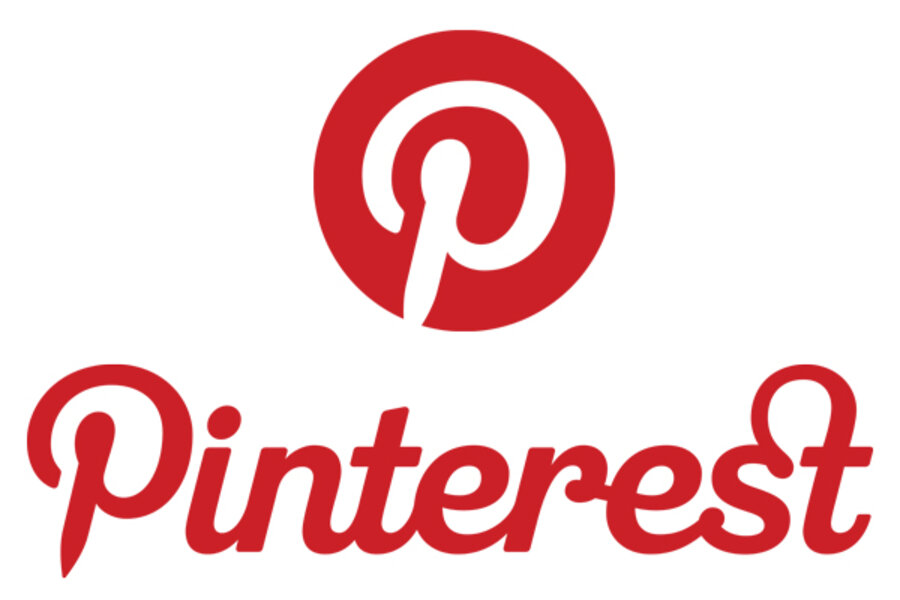Pinterest: An image-sharing Internet sensation
Loading...
The Manila folder filled with catalog clippings, the shoebox stuffed with snippets of a dream wedding, the online bookmark linking to beautiful inspiration – all three stand poised to be upstaged by a virtual image pinboard with a social network to boot.
Pinterest.com is a website that allows users to "pin" interesting images onto "boards" they have titled themselves, such as "recipes to try," "wedding ideas," "nature photography," "interesting books," "cute short-legged corgis," and "science is awesome."
Although the tools – boards and pins – conjure visions of cluttered bulletin boards, Pinterest more closely resembles a collection of magazines tailored by the tastes, styles, and aspirations of its users.
While social networks seem a dime a dozen right now, Pinterest's blend of beautiful images and an encouraging community has turned it into the fastest growing website of all time, reports Business Insider. In January, Pinterest hit 11.7 million unique users, a 40 percent jump in just a month.
These online pinboards aren't private. Anyone can browse your collection, and you can snoop through the boards of total strangers to get new ideas. If you see something appealing, you can "like" it, comment on the pins of others, and save the image by re-pinning it to your own pinboards.
Beyond idle voyeurism, Pinterest appeals to designers who collect visual ideas, artists who want to showcase their work, bloggers who want to increase traffic to their sites, crafters selling their wares, and brides-to-be searching for that perfect dress.
In other words, it's an online-shopping, scrapbookmaking, catalog-saving, Manila-folder-stuffing hoarder's dream come true.
Pinterest is an invitation-only network, but applying for the free membership is relatively easy – and even simpler if one of your friends invites you. When you sign up, the website asks what kind of images you'd like to find and then connects you with users who share those interests.
If you log on using an existing Facebook account, you will automatically start following any of your Facebook friends who are already using Pinterest. In turn, if you pin something, the image will appear instantly in your Facebook feed, so friends can see what you are drooling over, whether they are on Pinterest or not.
There are two ways to browse. You can sip from a steady live stream on the Pinterest home page, populated by the network of people you follow. Or you can monitor specific Pinterest topics, populated by all users.
Unlike other social networks, personal photos don't have a strong presence on Pinterest, although "upload a pin" (an image) is an option.
Comments tend to be brief. This is primarily a visual feast from every corner of the Web. You'll see pictures of midcentury modern chairs drift by. Dream kitchens. Funky illustrations. Fashionable outfits in urban settings. Pictures of adorable cats and dogs. Aquamarine seas and white sandy beaches. Chocolate-covered brownie ice-cream sandwiches. Treehouses. Occasionally, an offensive image appears, but those seem rare.
Or you can simply ignore all of that and use Pinterest as an online organization folder for images, articles, blogs, videos, and Web pages. By adding a button to your Web browser, you can pin anything you fancy, as long as the image is large enough.
Pinterest images all link back to the original source, so clicking on a pinned skirt may send you to the re-tailer's website. Realizing the shopping possibilities, and that women outnumber men on Pinterest, re-tailers have taken notice.
Savvy marketers sow their images across the topic pages, potentially directing viewers who pin their latest goods back to their online stores for a purchase.
Although Pinterest is a couple of years old, it is only now enjoying mainstream attention. Similar networks, such as Tumblr or Facebook – with its 800 million users – have trained people to flip through a sea of images. Not only that, but the ubiquity of camera phones and the ease of photography apps such as Instagram have created an endless supply and insatiable appetite for beautiful, hip images.
Yet unlike other social media, Pinterest pinners remain largely impersonal. User profiles often appear without context, void of the details, descriptions, and histories that one finds blasted across other networks.
Links to Facebook or Twitter can provide new visitors with a peek at a person's back story. But primarily, the pinboards speak for themselves.
More and more people are looking for ways to unbind prepackaged goods – magazines, cookbooks, and CDs – and create personalized collections.
Social network users are maturing to the point where they have become not just users and voyeurs, but curators – expertly editing the trails of online information beneath their fingertips into their own forms of stylized expression.
Pinterest is the newest kid on the social media block, and time will tell if its allure keeps the community coming back. Pinterest may go the way of MySpace, Friendster, and plenty of other hit networks that have burst.
But not before the contest for who has the coolest pinboards has been won.
For more on how technology intersect daily life, follow us on Twitter @venturenaut.






